You are using an out of date browser. It may not display this or other websites correctly.
You should upgrade or use an alternative browser.
You should upgrade or use an alternative browser.
Yokosuka (Kugisho) MXY6 motor glider (proof-of-concept for Kyushu Shinden)
- Thread starter Justo Miranda
- Start date
blackkite
Don't laugh, don't cry, don't even curse, but.....
- Joined
- 31 May 2007
- Messages
- 8,597
- Reaction score
- 6,844
Oh MXY6 and Shinden-Kai!
We already know that this Shinden-kai's model is innocent one, especially air intake.
Many thanks Justo, Robin and Star.
Wing Span: 11.140m
Hight : 4.210m
Wing Area : 20.5 Square Meter
All-Up Weight : 640Kg
Engine : Nihonnainenki(日本内燃機, The Japan Internal-combustion engine,Co.Ltd(Sorry, this English name is my guess. ;D )) Semi(蝉, Cicada) 11
(25hp, take off power 35hp) X 1, (name : AVA-4H, air cooling boxer 4 cylinders)
Crew : 1
We already know that this Shinden-kai's model is innocent one, especially air intake.
Many thanks Justo, Robin and Star.
Kugisho MXY-6 Aerodynamic Testing Motor Glider
Length : 9.660mWing Span: 11.140m
Hight : 4.210m
Wing Area : 20.5 Square Meter
All-Up Weight : 640Kg
Engine : Nihonnainenki(日本内燃機, The Japan Internal-combustion engine,Co.Ltd(Sorry, this English name is my guess. ;D )) Semi(蝉, Cicada) 11
(25hp, take off power 35hp) X 1, (name : AVA-4H, air cooling boxer 4 cylinders)
Crew : 1
blackkite
Don't laugh, don't cry, don't even curse, but.....
- Joined
- 31 May 2007
- Messages
- 8,597
- Reaction score
- 6,844
Hi! Kugisho MXY-6 motor glider for Shinden design.
Attachments
-
 Shinden_and_MXY-6.jpg105.3 KB · Views: 133
Shinden_and_MXY-6.jpg105.3 KB · Views: 133 -
 MXY-6 PIC1.jpg108.8 KB · Views: 107
MXY-6 PIC1.jpg108.8 KB · Views: 107 -
 MXY6.jpg196.3 KB · Views: 104
MXY6.jpg196.3 KB · Views: 104 -
 MXY6_glider_captured_atsugi_1945-1.jpg158.8 KB · Views: 93
MXY6_glider_captured_atsugi_1945-1.jpg158.8 KB · Views: 93 -
 MXY6_glider_captured_atsugi_1945-NA.jpg140.7 KB · Views: 93
MXY6_glider_captured_atsugi_1945-NA.jpg140.7 KB · Views: 93 -
 MXY-6.jpg117.6 KB · Views: 107
MXY-6.jpg117.6 KB · Views: 107 -
 kyushu-mxy6.jpg49.5 KB · Views: 133
kyushu-mxy6.jpg49.5 KB · Views: 133
Is there any reliable source of information on the color? In some pictures it's yellow; in others, it's orange.
I'm building it and finally just went for a compromise orangish yellow:
I'm building it and finally just went for a compromise orangish yellow:
blackkite
Don't laugh, don't cry, don't even curse, but.....
- Joined
- 31 May 2007
- Messages
- 8,597
- Reaction score
- 6,844
orange yellow

 www.color-site.com
www.color-site.com

橙黄色(とうおうしょく/とうこうしょく)|カラーサイト.com
橙黄色(とうおうしょく/とうこうしょく)の色見本やRGB、HSVなどの詳しい色情報です。色相や彩度を変えたときの配色も見ることができます。
Here is how the project came out. Thanks again for your help!
Attachments
-
 mxy6_by_me109emil_dhxjncl-pre.jpg46.6 KB · Views: 22
mxy6_by_me109emil_dhxjncl-pre.jpg46.6 KB · Views: 22 -
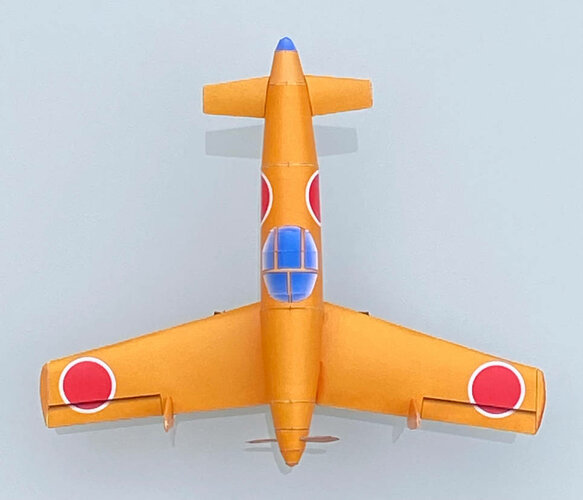 mxy6_7_by_me109emil_dhxjjd8-pre.jpg46.1 KB · Views: 20
mxy6_7_by_me109emil_dhxjjd8-pre.jpg46.1 KB · Views: 20 -
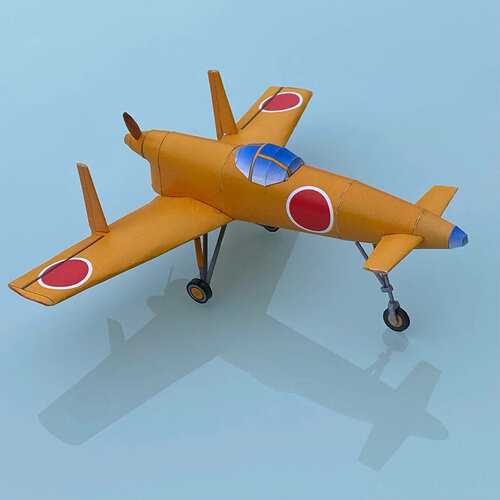 mxy6_6_by_me109emil_dhxjk3r-pre.jpg45.3 KB · Views: 21
mxy6_6_by_me109emil_dhxjk3r-pre.jpg45.3 KB · Views: 21 -
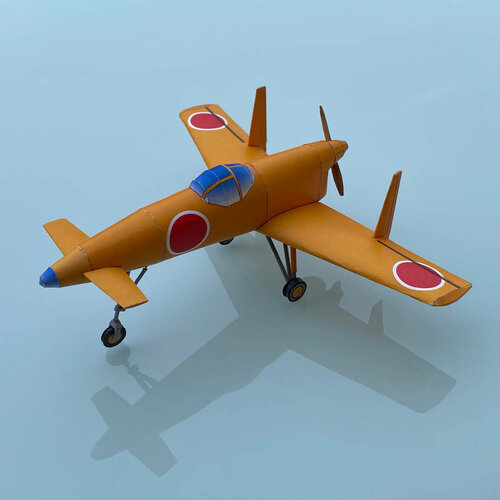 mxy6_5_by_me109emil_dhxjk45-pre.jpg42 KB · Views: 18
mxy6_5_by_me109emil_dhxjk45-pre.jpg42 KB · Views: 18 -
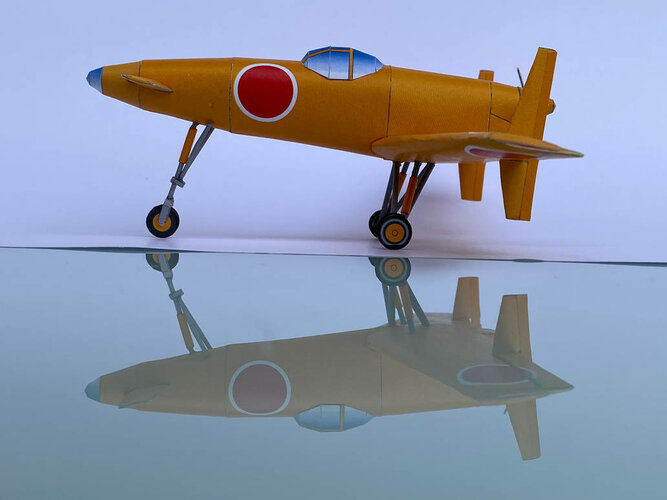 mxy6_4_by_me109emil_dhxjk4n-pre.jpg50.3 KB · Views: 21
mxy6_4_by_me109emil_dhxjk4n-pre.jpg50.3 KB · Views: 21 -
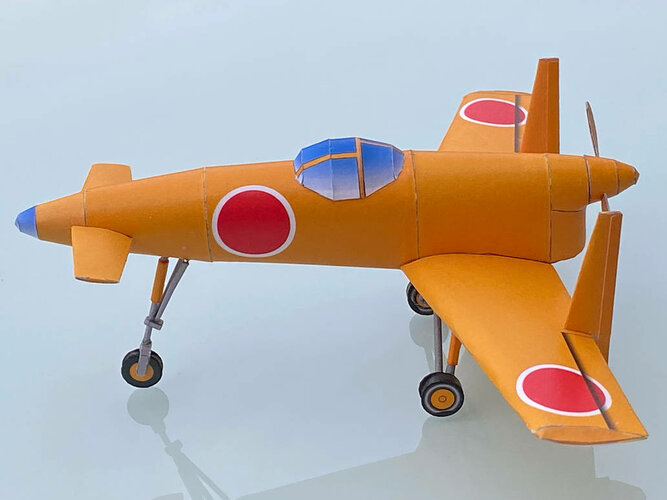 mxy6_3_by_me109emil_dhxjjbr-pre.jpg53.4 KB · Views: 20
mxy6_3_by_me109emil_dhxjjbr-pre.jpg53.4 KB · Views: 20 -
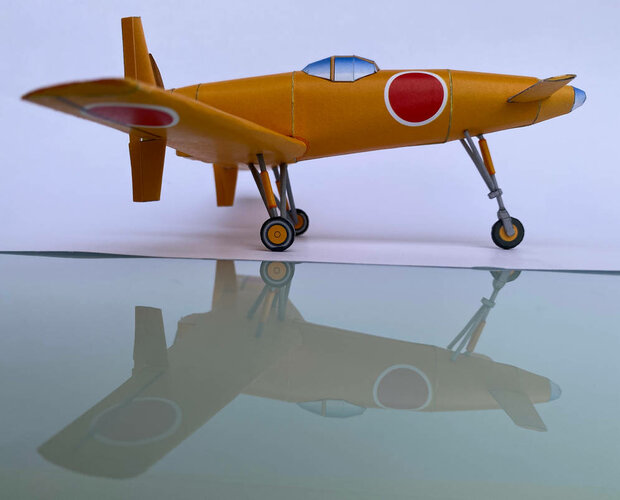 mxy6_1_by_me109emil_dhxjjcw-pre.jpg47.1 KB · Views: 33
mxy6_1_by_me109emil_dhxjjcw-pre.jpg47.1 KB · Views: 33
To meet the IJN requirements of 1943, (18-shi-Otsu non-official specification) calling for a land-based, high-performance interceptor able to counter the new Allied fighters, Nakajima proposed the twin engine J5N1 Tenrai and Kawasaki the J6K1 Jinpu. Early in 1943 Lieutenant Commander Masaoki Tsuruno, of the First Naval Air Technical Arsenal, proposed the construction of a 18-shi-Otsu ‘canard’ fighter based on the information obtained on the Curtiss XP-55.
The Kaigun Koku Hombu ordered the firm Chigasaki Seizo K.K. the construction of three wooden experimental gliders MXY6, with ‘canard’ lifting surfaces, to prove the feasibility of the concept. Glider tests, towed by one Nakajima B5N bomber, began at Yokosuka in the fall of 1943, demonstrating good flight characteristics. One of the prototypes was finally fitted with a 22 hp Nihon Semi Ha-90/11 four-cylinder-boxer, air-cooled engine, driving a two-bladed wooden airscrew from a Kugisho MXY4 anti-aircraft target.
In 1945 the MXY6 was proposed to the IJN as a prototype suicide plane, but the project was not carried out because of the priority given to the construction of the Showa Toka bomber.
MXY6 3rd prototype technical data
Wingspan: 9.14 m, length: 7.3 m, height: 2.95 m, wing area: 17 sq. m, max weight: 500 kg, max speed: 320 kph.
The Kaigun Koku Hombu ordered the firm Chigasaki Seizo K.K. the construction of three wooden experimental gliders MXY6, with ‘canard’ lifting surfaces, to prove the feasibility of the concept. Glider tests, towed by one Nakajima B5N bomber, began at Yokosuka in the fall of 1943, demonstrating good flight characteristics. One of the prototypes was finally fitted with a 22 hp Nihon Semi Ha-90/11 four-cylinder-boxer, air-cooled engine, driving a two-bladed wooden airscrew from a Kugisho MXY4 anti-aircraft target.
In 1945 the MXY6 was proposed to the IJN as a prototype suicide plane, but the project was not carried out because of the priority given to the construction of the Showa Toka bomber.
MXY6 3rd prototype technical data
Wingspan: 9.14 m, length: 7.3 m, height: 2.95 m, wing area: 17 sq. m, max weight: 500 kg, max speed: 320 kph.
Attachments
Thanks for the drawings!
- Joined
- 11 March 2012
- Messages
- 3,122
- Reaction score
- 2,962
Holy "copying your enemy's worst ideas!"" .... Early in 1943 Lieutenant Commander Masaoki Tsuruno, of the First Naval Air Technical Arsenal, proposed the construction of a 18-shi-Otsu ‘canard’ fighter based on the information obtained on the Curtiss XP-55. ... "
Makes you wonder if Curtiss was sending Ascender drawings with the objective of messing with the Japanese.
Hah!
Hah!
I have wondered why both American and Japanese designers repeated the same mistakes.
Japanese engineers were wise to eliminate the problematic swept main wing from the Ascender. Two Ascender prototypes were lost to inverted spins.
Adding a powerful radial engine just added to handling problems. The asymmetric thrust influenced by turbulent airflow behind the stubby fuselage aggravated marginal handling characteristics.
To see what a successful Ascender or Shinden might have looked like, look at Burt Rutan's ARES experimental, ground-attack, canard airplane. Rutan moved the center of gravity far enough forward to heavily-load the canard. Rudders are mounted on booms that extend them far enough aft to effectively contribute to yaw stability and control. Rutan also eliminated most of the sweep in the main wing.
Similar threads
-
-
Yokosuka (Yokosho/Yosho, Kugisho/Kusho) related topics on this forum
- Started by Stargazer
- Replies: 0
-
Japanese Secret Projects:Experimental Aircraft of the IJA & IJN 1939-1945
- Started by Pelzig
- Replies: 261
-
-
Yokosuka P1Y Ginga ("Frances") Variants and Projects
- Started by hesham
- Replies: 86








